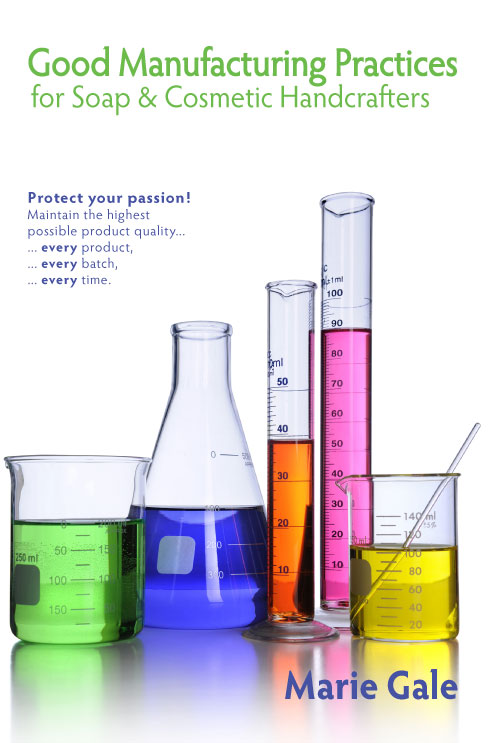In a nutshell, no, testing is not required. What is required is that you make sure your products are safe.
Actually, the FDA (and most state) regulations require that you ensure that your product is not “adulterated or misbranded.” So what does that mean, exactly?
The Food, Drug and Cosmetic Act (which is the law that gives the FDA authority over cosmetics) prohibits adulterated or misbranded products in interstate commerce. In essence, that’s what the FDA can enforce. (For more information see the FDA’s article, FDA Authority Over Cosmetics, on the FDA website.)
Adulterated
Adulteration in the product composition might come from (for example); ingredients, contaminants, processing, packaging, or shipping and handling. A product is adulterated if:
- “it bears or contains any poisonous or deleterious substance which may render it injurious to users under the conditions of use prescribed in the labeling thereof, or under conditions of use as are customary and usual” [with an exception made for hair dyes];
- “it consists in whole or in part of any filthy, putrid, or decomposed substance”;
- “it has been prepared, packed, or held under insanitary conditions whereby it may have become contaminated with filth, or whereby it may have been rendered injurious to health”;
- “its container is composed, in whole or in part, of any poisonous or deleterious substance which may render the contents injurious to health”; or
- except for hair dyes, “it is, or it bears or contains, a color additive which is unsafe within the meaning of section 721(a)” of the FD&C Act. (FD&C Act, sec. 601)
In other words, if the product contains anything poisonous, deleterious (harmful or injurious, especially in a subtle way) that could harm a potential consumer, or if contains a filthy, putrid, or decomposed substance (mold, anyone?) or if it was prepared or packed in unsanitary conditions where it might have become contaminated, or if the container is made of something harmful, then it is adulterated.
Avoiding Risk
One would have to assume that cosmetic handcrafters don’t WANT to have an adulterated product. After all, not only is it potentially harmful, it’s a not good idea for the future of one’s business; you don’t get repeat business from a consumer who gets a bad product.
Right from the outset, there are things you can do to reduce the possibility of adulteration in your products.
Safe Ingredients
First off, use safe ingredients. Many old (pre-1930 or so) cosmetic recipes call for ingredients that are known to be unsafe. Arsenic, lead, and mercury were once used in cosmetics—those are all definitely unsafe! Certain essential oils may be unsafe in certain conditions. For example, an essential oil that is an abortifactant probably shouldn’t be used in a product intended for pregnant women. And certain essential oils are not recommended for use on children or babies.
Sanitary Handling
Preparing and packing your product in sanitary conditions goes a long way toward ensuring the product doesn’t become adulterated when you make it. Properly cleaning workspaces before you start (using a cleaner that doesn’t leave any residue that could contaminate the product) is important. Using clean (even sterilized) tools and equipment eliminates the possibility of contamination from something being on them.
Most importantly, people can often be a source of contamination. Germs or bacteria on your hands, uncovered hair, or dirty clothing can potentially affect your product adversely. Be sure to wear appropriate garb, not only to protect yourself, but to protect your product. Hair nets, gloves, and clean lab coats can make a huge difference.
Preservatives
Even if you have done absolutely everything right in making your product, most cosmetic products (especially those containing water), have a high chance of becoming adulterated over time. Even a tiny bit of bacteria, mold, or yeast in the product, which might come from a botanical ingredient or even be added to the product through consumer use, can grow into a nightmare.
Correctly selected preservatives, when used, are designed to stop any potential growth of such things, thereby keeping the product uncontaminated and safe for use.
Proven Recipes from Reliable Sources
Assuming that you are taking care not to contaminate the product when you make it, using a recipe that has been proven to be safe is also added protection against contamination. Generally, a proven recipe contains ingredients that are known to be safe. A suitable preservative system should be used, which has been confirmed to protect the product from potential future contamination.
Many suppliers provide proven recipes to accompany the ingredients they sell, and often give detailed instructions on how to safely make the product. When using such a recipe, follow the directions exactly. If you make changes or additions to the recipe, be sure you do so in a way that doesn’t negate the preservative system. (That especially applies to using pre-made bases.) If you have questions about what you should or shouldn’t do, contact your supplier. Generally they will be able to provide guidance. After all, they want their recipes or bases used to make safe products.
Developing Cosmetic Products
When you start developing your own cosmetic product formulations, you may start moving into uncharted territory. It’s unlikely that you’ll be “inventing” new ingredients, but you may start using existing, known-to-be-safe, ingredients in different combinations. It’s up to you to somehow ensure that the products are safe, clean, and unadulterated… and that they won’t become adulterated over time or through use. That’s where testing (in its many possible forms) comes into play.
Testing?
So, now we’re back to the original question: Is testing required? And the answer is, once again: No, testing is not required.
HOWEVER, “testing” comes in many forms, and some of them are a really good idea. You may not send the product out to a lab for challenge, stability, or other testing, but you still have a legal (and ethical) need to be certain that your products are safe for use.
If you follow all the guidelines above to avoid risk, and use a proven recipe, that may be sufficient for you to feel confident in selling your product.
You may use the product yourself or give the product to friends or family to try; that gives you some additional knowledge about the effects of the product and its stability.
Observing product you’ve made over time and watching for any changes is another way to verify your product is stable and make sure that it doesn’t become contaminated.
Taking it one step further, you might become educated in the processes for in-house challenge or stability testing and implement them as part of your development and/or production practices.
Lastly, of course, you could send your products to an outside lab to do stability, challenge, or other testing for you. That would give you the greatest level of certainty that your product isn’t, and won’t become, adulterated.
But is it required? No.



Leave a Reply